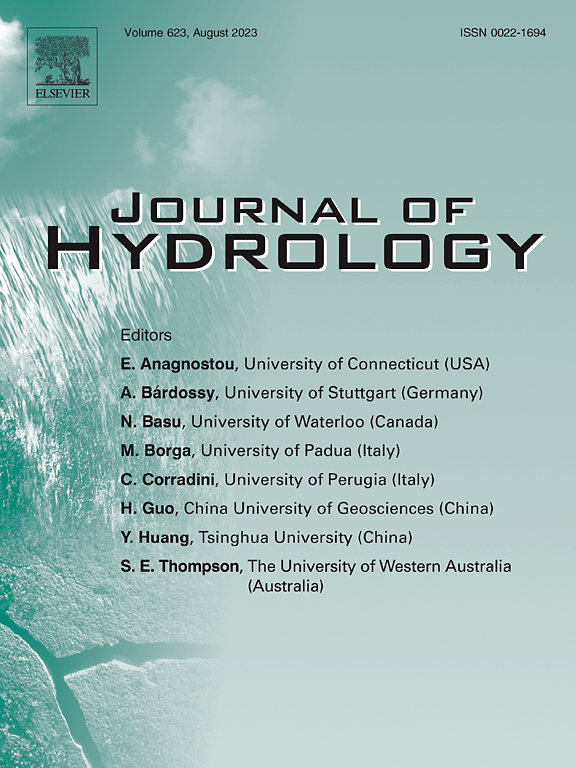Near-surface turbulence mixing in a large channel-type reservoir: Potential impacts on phytoplankton distribution
IF 5.9
1区 地球科学
Q1 ENGINEERING, CIVIL
引用次数: 0
Abstract
In lakes, the vertical distribution of phytoplankton is strongly influenced by turbulence mixing in the near-surface layer, driven by atmospheric forces. In large channel-type reservoirs, it additionally influenced by inflows and reservoir regulation. However, the surface turbulent mixing and its impact on phytoplankton dynamics in these channel-type reservoirs have rarely been investigated, despite its potential to significantly influence the vertical distribution of phytoplankton, which are crucial for understanding the health and productivity of large regulated water systems. In this study, high-frequency meteorological data, water temperature, flow velocity, and phytoplankton parameters were continuously measured for one week in Xiangjiaba Reservoir, located in the upper Yangtze River, during early spring, divided into two periods: a 5-day period of normal conditions and 2 days experiencing cold fronts. During the initial phase, diurnal variations in thermal structure, mixing scales, and chlorophyll-a were observed, with an average bulk Richardson number (Ribulk) of 3.6 and relatively low turbulence dissipation rates (ε) ranging from 10−9 ∼ 10−5 W/kg. In the subsequent cold front events, stronger atmospheric forces and intensified hydrodynamics resulted in a decrease in Ribulk. During wind and convection co-occurrence, Ribulk dropped to ∼1.84, and the co-effects between these forces increased the mixed depth;while Ribulk decreased further to 0.71 with only convection, deepening the mixed layer even more. Cold fronts markedly increased near-surface turbulence with ε escalating to 10−4 ∼ 10−3 W/kg during wind-convection events and 10−5 ∼ 10−4 W/kg during the convective-only period. Thermal stratification and active mixing regulated the phytoplankton vertical distribution. When stratified, diurnal vertical migrations of Eudorina elegans determine the Chl-a distribution, while the thermocline can act as a physical barrier, confining phytoplankton near its depth. In contrast, actively wind-induced mixing redistributed phytoplankton more evenly throughout the water column, while convective mixing led to the formation of a deep chlorophyll-a peak, indicative of phytoplankton downward migration.
求助全文
约1分钟内获得全文
求助全文
来源期刊

Journal of Hydrology
地学-地球科学综合
CiteScore
11.00
自引率
12.50%
发文量
1309
审稿时长
7.5 months
期刊介绍:
The Journal of Hydrology publishes original research papers and comprehensive reviews in all the subfields of the hydrological sciences including water based management and policy issues that impact on economics and society. These comprise, but are not limited to the physical, chemical, biogeochemical, stochastic and systems aspects of surface and groundwater hydrology, hydrometeorology and hydrogeology. Relevant topics incorporating the insights and methodologies of disciplines such as climatology, water resource systems, hydraulics, agrohydrology, geomorphology, soil science, instrumentation and remote sensing, civil and environmental engineering are included. Social science perspectives on hydrological problems such as resource and ecological economics, environmental sociology, psychology and behavioural science, management and policy analysis are also invited. Multi-and interdisciplinary analyses of hydrological problems are within scope. The science published in the Journal of Hydrology is relevant to catchment scales rather than exclusively to a local scale or site.
 求助内容:
求助内容: 应助结果提醒方式:
应助结果提醒方式:


